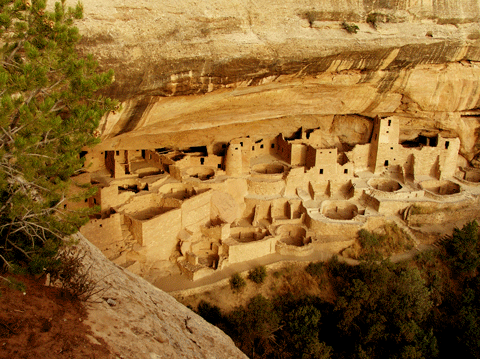Tales of a 21st Century Gypsy
September 24, 2005 - Mesa Verde.
The drawings in Sego Canyon were evidence of human presence over 4000 years. People actually lived at Mesa Verde, though. You’ve probably seen the photos of the cliff dwellings, and heard that the Anasazi suddenly disappeared and no one knows why. The cliff dwellings are indeed astonishing. The whole way of life is astonishing in its difference from how we live, the closeness that must have characterized those communities, and the complexity of their social structure. But the overall picture is, of course, much richer than just houses wedged in cracks in the cliffs and a group of people who disappeared.

Mesa Verde means “green table,” or “green plateau.” It is, in fact, a long sloping plateau, seven thousand feet at one end and above eighty five hundred at the other. Way before people moved into multi-story houses in the cliff cracks, they lived on top of the plateau. Archaeologists have done a nice job of tracking the changes in their homes over time. The Park Service has done as lovely a job showing us the progression, on a quiet drive from one home to the next along the top of the mesa. It’s a bit uncanny, to see so clearly how the conditions of a group of people evolved over time, as they settled in and became more established in their place. And then how they lost that comfort and quickly moved on, leaving behind the material traces that we use to understand them.




